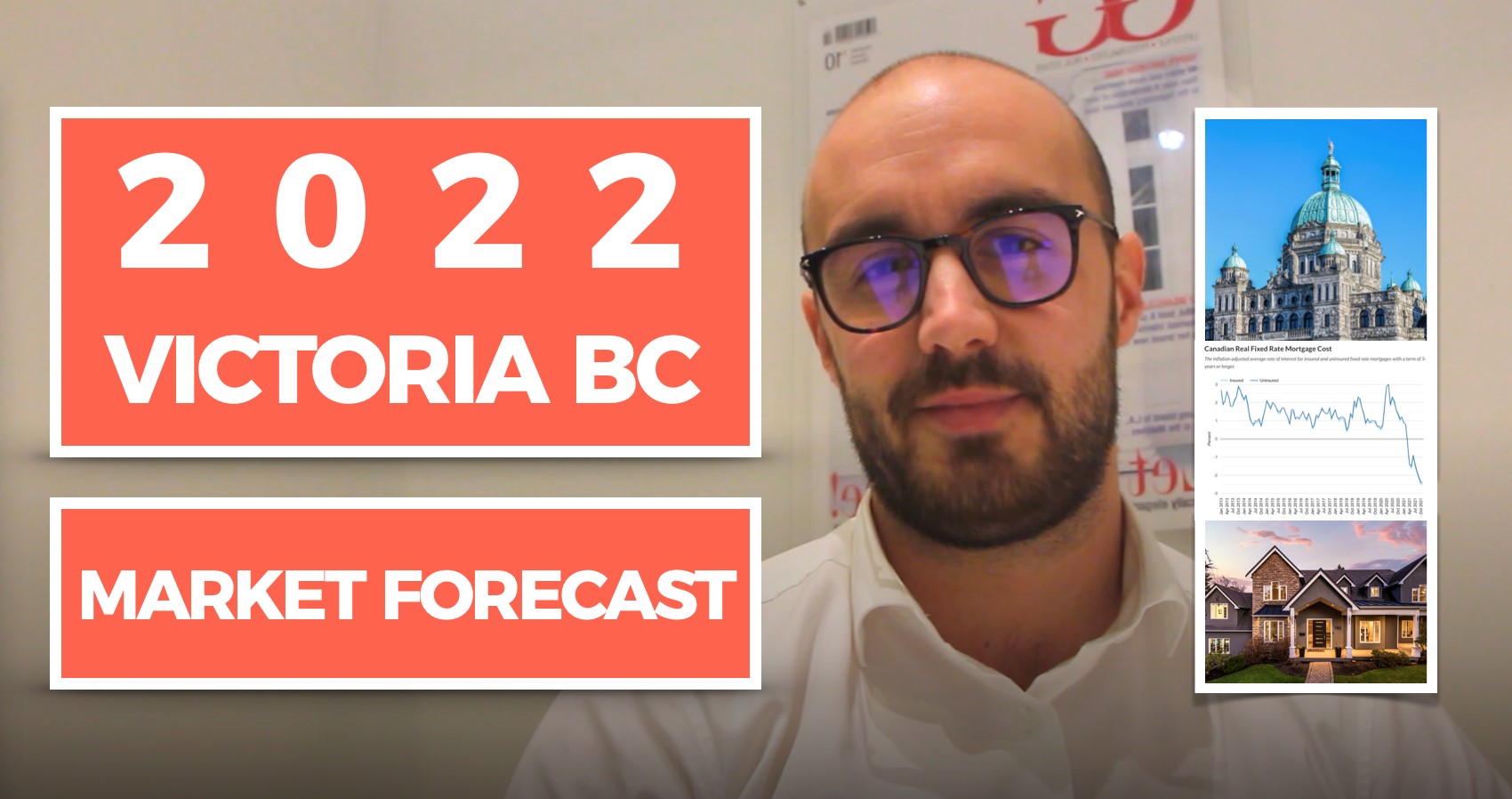2020 Real Estate Recap – Victoria
Hello. I hope this message finds you and your families safe, healthy and in good spirits. My goal is to bring you relevant real estate market information, new listings, and the latest news which is shaping our local housing market.
Before I jump into the last month of 2020’s statistics. I just wanted to wish you a Happy New Year from all of us at the Carroll Group! We’re hoping this year marks a bright and positive shift in world events and your lives here in Victoria!
Lucas Hammond (left), James Robertson (middle), Alex Carroll (right)
This market update, more than others, will aim to look at 2020 as a whole and position it relative to how we see the market activity unfolding in 2021. December marked a slightly slower month in 2020, but since the ignition of our spring market in June we have had very little lapse in market pace. When pent-up demand returned in full force, June produced 808 sales after just 287 sales in April. The activity level has sustained since June and December was yet another month with activity well above the average in the last 5 years.
The more critical bit of insight that December has given us is that we can no longer just attribute this activity to ‘pent-up demand’ that was due in 2020 after restrictions were lifted, but simply a more active contingent of buyers than we have seen in the last few years. The pandemic has reframed the narrative for what living at home should mean, and low rates are inspiring moves and purchases alike.
The other more challenging aspect of December’s statistics is the picture it paints for our active inventory currently. At the end of December, there were 1,297 active listings on Victoria’s Real Estate Board. That is the lowest level of inventory our board has recorded in the last 25 years.
A total of 8,497 properties changed hands in 2020. For context, the ten-year average for sales/year is 7,329 and the total for 2020 is even more astonishing given the lull in April and May. Here are some more markers and records set in 2020:
There were 234 sales above $2,000,000 on the Victoria Real Estate Board in 2020. The previous high was 146 in 2017. There were 103 in 2019.
October’s median sale price of $893,000 is the highest our real estate board has ever recorded. The average in 2020 was $865,000.
The average sale price of a single-family home on the Victoria Real Estate Board for 2020 was $1,010,219. The previous high was $893,842 in 2019. The highest average this year was in November at $1,100,659.
The average sale price of a condominium on the Victoria Real Estate Board for 2020 was $484,317. Just a slight increase from the previous high of $472,736 in 2018.
The luxury market was on fire in 2020. My sense is that we simply have had more move-up buyers and eyes on Victoria as a long-term destination from other parts of Canada, and the rest of the world, in 2020. The most up-to-date Buyer’s Origins Report was published by our board from Q1-Q3 (ending Sept. 30) it appears that the number of buyers originating from the Lower Mainland, Ontario/Quebec, will all be up this year vs. 2019. At the end of Q3, greater Vancouver had contributed 8.96% of the buyers in our market, ON/QC – 4.05%, USA – 0.92%. As is the norm, around 3/4 of those purchasing real estate in Victoria are Victorians. Once the Q1-Q4 update is published I estimate it will further this notion.
Sales in the condo market have climbed slowly from when they bottomed out in April (76 Sales) to the year’s high of 293 Sales in October. Historically the peak of condo sales occurs in the late spring/summer so this October peak is more consistent with the pandemic shutdown.
Despite my own interpretation that the condo market was failing to keep up with new inventory, October’s condo sales suggested that demand was still healthy in this segment (the highest number of sales in a month since 2017). Of the 293 Sales, 111 were below $400,000 and 50 were over $600,000 (close to last month’s all-time high at 52).
As a whole, there were actually more sales in the condo market than in 2018 or 2019 with 2,421 this year. This year-end total comes in 3rd behind 2016 (2,909) and 2017 (2,793) for total sales in the last decade. With that said, there were also more active listings than there have been in the last 5 years with June, July and August sharing the peak of just over 800 active listings. Because of a lift in inventory to match demand, prices have remained quite stable with a nominal increase.
Factors supporting our condo market are affordability, low rates, and thin rental inventory (Greater Victoria’s vacancy rate is still just 1.2 percent). Recently completed buildings at the Wade, Yates on Yates, and Hudson Place One will continue to fuel inventory levels. I will continue to monitor our inventory level to sales ratio as we head towards the Spring.
A few more details that I shared about what’s happening behind the scenes included the Bank of Canada’s purchases of Canada Mortgage Bonds (debt securities guaranteed by the Government). This program launched in full force in March as one of the measures of quantitative easing but since ceased in October. In their minds, there was enough liquidity in the market for them to take this step. They surpassed $8 Billion dollars worth of these bonds in July and in turn, had an effect on suppressing rates by creating more liquidity for mortgage originators (who sell the government MBSs). The BoC chief has expressed that rates will remain low “for a long time” and potentially into 2023.
Another initiative that came to an end in October was deferring mortgage payments. At the end of August, 16% of all Canadian residential mortgages had deferred at least 1 payment (32% of which have since resumed payments). Closer to home, the number was 10.3% at the end of August in British Columbia (just for CMHC insured mortgages). Mortgage delinquencies have not been a noticeable trend in Victoria.
So, what does this mean for Real Estate sales in 2021?
The thin inventory at the start of the year is a huge concern for those that are trying to get into the market and my expectation is that we will reach all-time highs in value heading towards the spring if inventory doesn’t come onto the market to support demand at a more reasonable level.
Our real estate market is showing more signs of strength than ever before, and our central banking policy is supporting the function of Canadian real estate markets. The downside of all this, single-family homes in our more desirable neighbourhoods is getting out of reach for some. The question may ultimately become how far can prices push relative to incomes in our city.
For those that are currently participating in the market, our industry has adopted new business practices and is emphasizing the use of technology in order to showcase properties as safe as possible. Listings can include video property tours and 3D tours and we are using health disclosures, social distancing, and disinfecting/sanitary procedures to help limit the risks associated with property visits.
Feel free to reach out to us with any of your market-related questions or if you would like some of our insight into your potential move in 2021!



